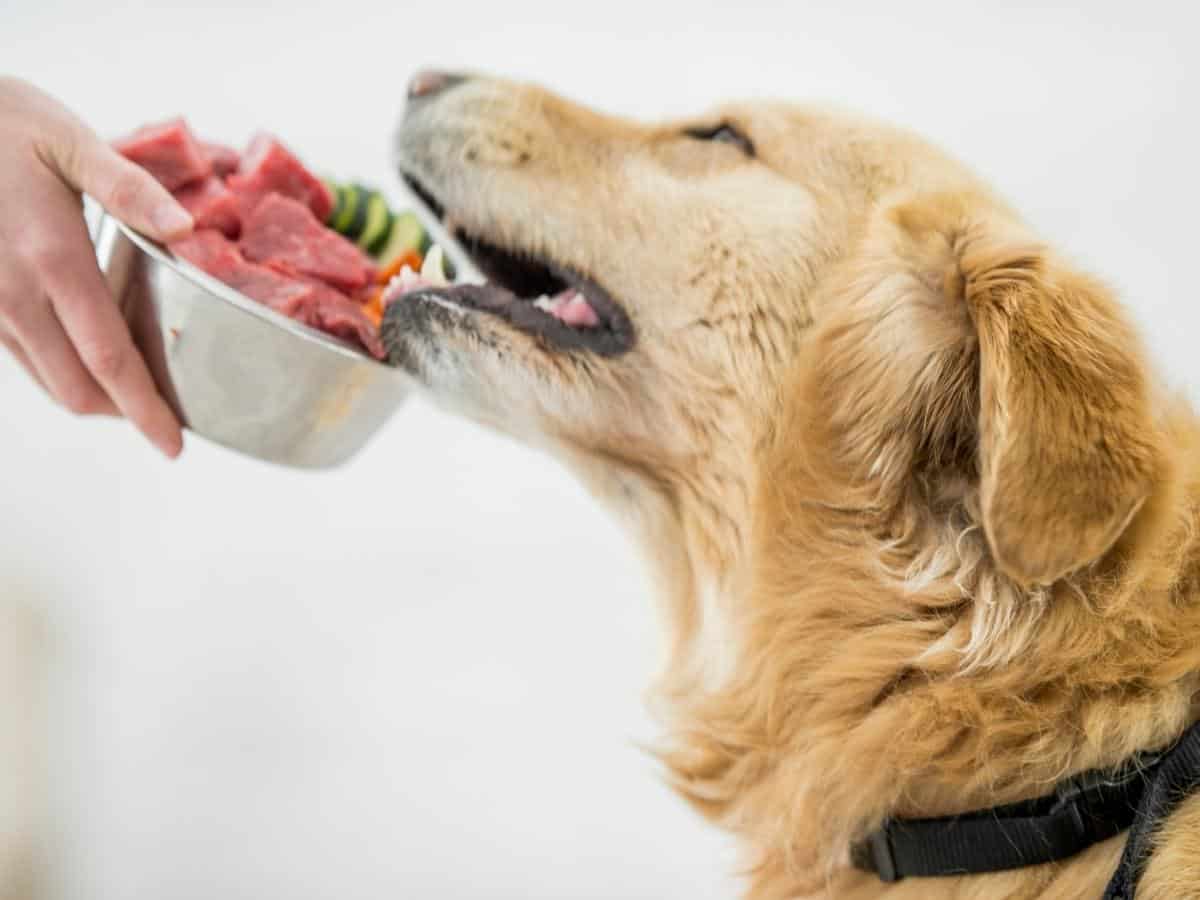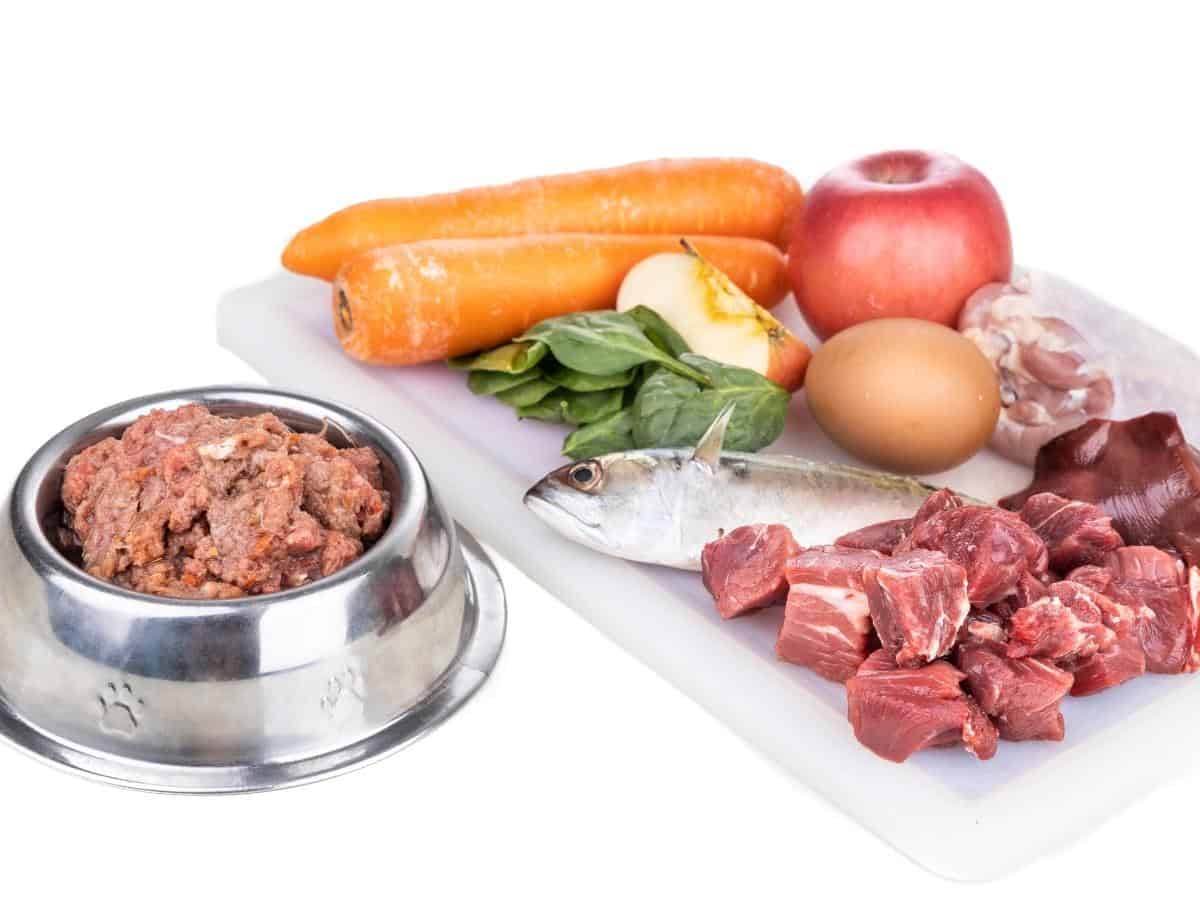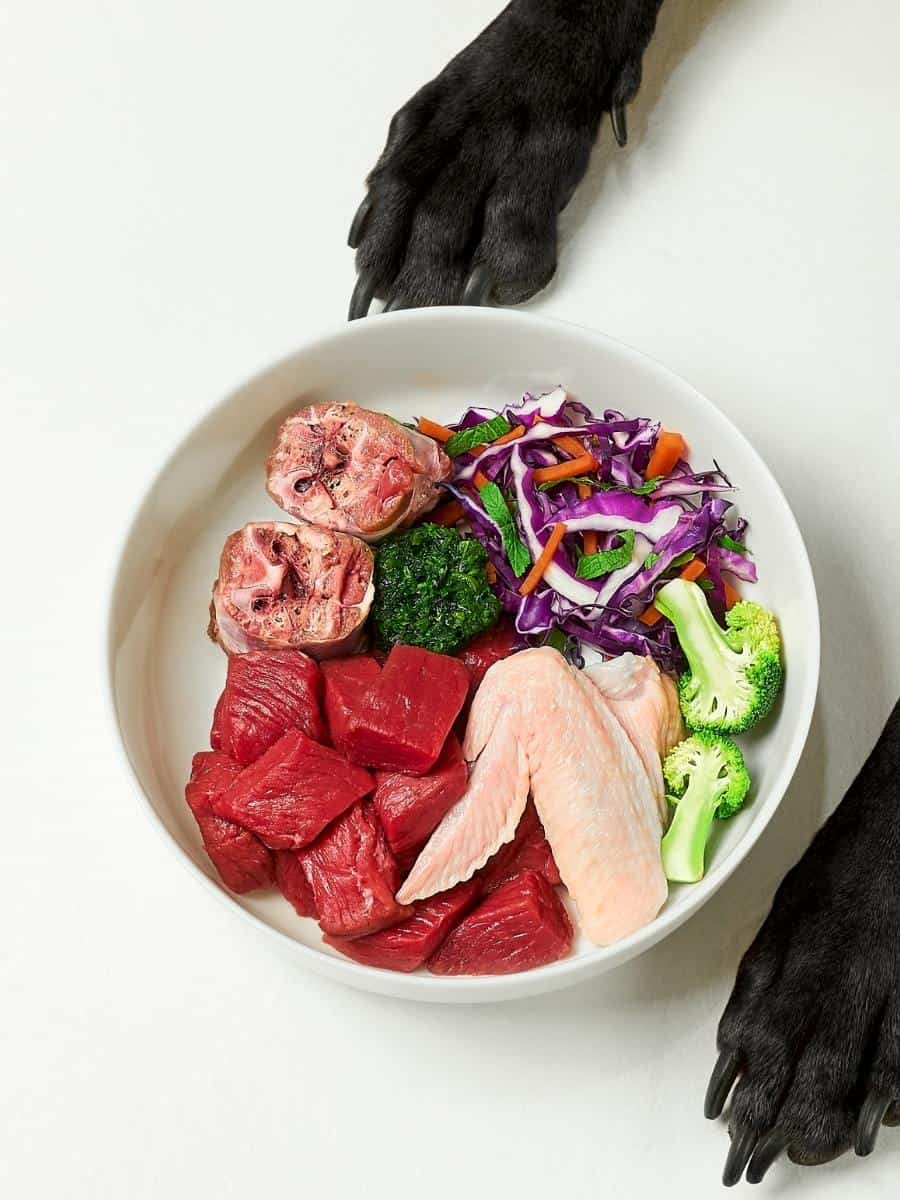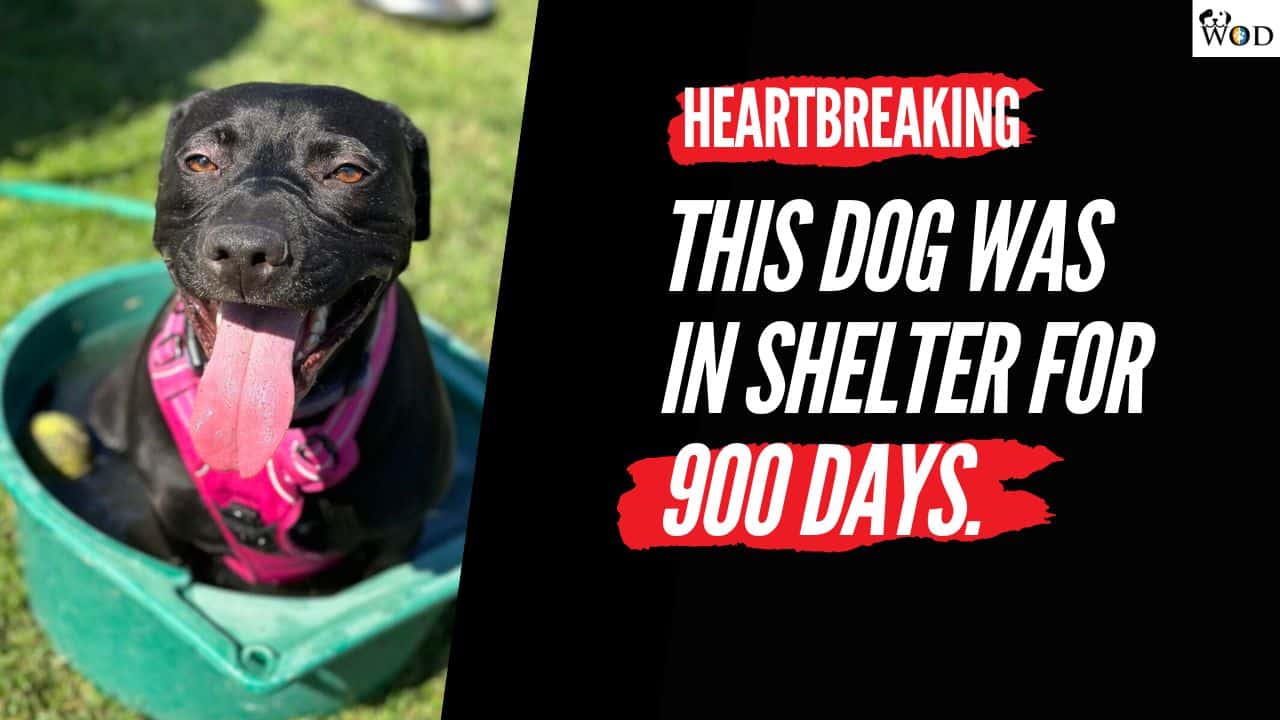Before we welcomed them to our domestic space, dogs predominantly ate uncooked meat in its natural form.
Today, many dog owners are shifting away from the dry kibble diet and considering the raw dog diet again, despite its higher cost and the pro-vs-con controversy around it.
But with this shift towards a more ‘natural’ diet comes an important question: What is the actual cost of feeding your dog a raw diet?
It costs approximately $12 per day and $353 per month to feed your dog a raw diet, but this cost can vary depending on the supplier. If you feed your dog with a homemade raw diet, the cost will vary depending on the ingredients and your vet’s feeding instructions.
Whether you’re a long-time advocate of raw feeding or a curious newcomer, understanding the financial implications is important.
In this guide, we dive deep into the world of raw diets for dogs, breaking down the costs, benefits, and considerations that you should be aware of. This will help you balance your dog’s nutritional needs and budget constraints.

How Much Does It Cost To Feed Your Dog Raw?
First, it is important to remember that feeding your dog raw means providing safe, healthy foods.
The American Veterinary Medical Association policy discourages feeding your dog with raw meat that has not gone through a process of eliminating pathogens and is, therefore, a risk to your pet’s health.
On average, it costs $12 per day and $353 per month to feed your dog raw. These costs vary depending on whether the food is homemade or acquired from commercial dog food stores.
The cost of homemade raw food depends on your vet’s provided feeding plan, while commercial prices vary with the supplier.

So, how did I get these figures?
To give you an idea of how much you would pay to feed your dog raw, I randomly picked three raw dog food suppliers in the US and calculated the cost of feeding your dog for a day and a month.
I considered similar dog food recipes from all suppliers. The three choices have the following common characteristics:
- They are chicken-blend meals.
- They are created to feed an adult dog around 60 lbs (27.21 kg). Note that some of the suppliers ask you to indicate your dog’s weight on the website to calculate the portions.
Here are the three raw dog food suppliers I considered and the daily and monthly costs for each:
| Raw Dog Food Supplier | Cost per Day | Cost per Month |
| Darwin’s Natural Pet Products | $8.02 | $240.60 |
| Steve’s Real Food Online | $12.33 | $369.90 |
| BJ’s Raw | $14.99 | $449.70 |
| Average | $11.78 | $353.40 |
From the examples, raw commercial food can cost $8-$15 a day or $240-$450 a month. The costs are higher or lower depending on the supplier.
What Is a Raw Dog Diet?
A raw dog diet is a meal of uncooked food that a dog consumes. The raw diet generally consists of raw meat from beef, poultry, pork, fish, and dog-safe uncooked vegetables and fruits.
Raw dog diets usually consist of the following ingredients:
- Bone meat
- Muscle meat
- Whole or ground bones
- Organ meat (kidney & livers)
- Fish
- Raw eggs
- Raw vegetables (broccoli, carrots, spinach, peas, green beans, celery, etc.)
- Fruits (apples, bananas, blueberries, watermelons, etc.)
Raw dog diets are sometimes described as BARF (previously Bones and Raw Food, but now Biologically Appropriate Raw Food). This term was coined by the Australian vet Ian Billinghurst.
In 1993, Billinghurst’s book, “Give Your Dog a Bone,” suggested feeding your dog raw meat was natural and healthier than feeding the pet with cooked food or dry kibble.
So, is a raw dog diet really healthier and safe for your dog?
Should You Feed Your Dog Raw Food?
The debate around feeding your dog raw food is controversial. Some think it is healthier and close to the dog’s ancestral feeding behavior.
Others think dogs are no longer used to raw food and would not thrive with it. Besides, some raw foods can present health risks due to the presence of bacteria.
Major dog and human health organizations such as the FDA and the CDC discourage feeding your dog with raw food.
That said, knowing the pros and cons of feeding your dog raw food will help you decide if it’s the best option for your pet.
Unfortunately, there is no data from large cohort studies to support the benefits or disadvantages of feeding your dog a raw diet.
However, a study in 2018 found that a raw diet was well-tolerated among dogs. The study also supports some of the proposed benefits and risks of a raw dog diet.

Suggested benefits of feeding your dog raw food include the following:
- High palatability and digestibility
- Lower blood triglyceride levels
- A glossier coat and healthier skin
- Better dental health
- Higher energy levels
- Smaller and less smelly stool
Still, there are disadvantages associated with feeding your dog a raw diet:
- Unbalanced nutrition can cause health problems for your dog.
- The risk of bacteria and other pathogens for dogs and humans in the home.
- The study mentioned above found that dogs fed with raw food had more Fusobacteria, Proteobacteria, and Bacteroidetes than those fed with kibble.
- Raw bone meat can cause stomach and intestinal injuries if dogs swallow the bones. They can also cause tooth damage. Besides, high levels of calcium in the bones can trigger stomach upsets.
If you want to read more about this debate, check out this article, Kibble vs. Raw Dog Food (Which is Better?)
If the proposed benefits of feeding your dog raw food are enough to persuade you to adopt a raw diet for your pet, then you’ll need to budget for your pet’s raw diet ingredients. So, exactly how much does it cost to feed a dog a raw diet?
FAQs
Can I make my own raw dog food to save money?
Yes, making your own raw dog food is possible and can save money compared to pre-made raw diets. You must research a balanced recipe and source meat, bones, and organs from butcher shops. Prepare meals in batches and freeze portions.
Be aware that you’ll need a food processor or grinder to break down bones. Your time spent meal prepping is a factor as well. Test small amounts first and watch your dog’s health.
Are there any additional expenses associated with feeding dogs a raw diet?
While raw feeding may seem cheaper than kibble per pound, there are additional expenses to consider. You’ll need to budget for a freezer to store food, packaging like bags or containers, and supplements to balance the diet. Bone-in cuts of meat are less expensive than boneless but require more intensive chewing.
Over time, you may spend more on dental care if bones aren’t fed properly. Be sure to factor in all costs like these to determine if raw is truly affordable for your lifestyle.
Final Thoughts
Not everyone supports the idea of feeding your dog a raw diet.
Those who do cite healthier skin, shinier coats, and higher energy among the benefits of feeding your dog raw. Those who don’t focus on bacterial and pathogen risks.
If you feed your dog a raw diet, it is important to know that the choice is not cheap.
You will spend a good dollar on raw dog food, whether you opt for a homemade meal prepared with ingredients from grocery stores or frozen or freeze-dried commercial meals.
The choice is yours!





